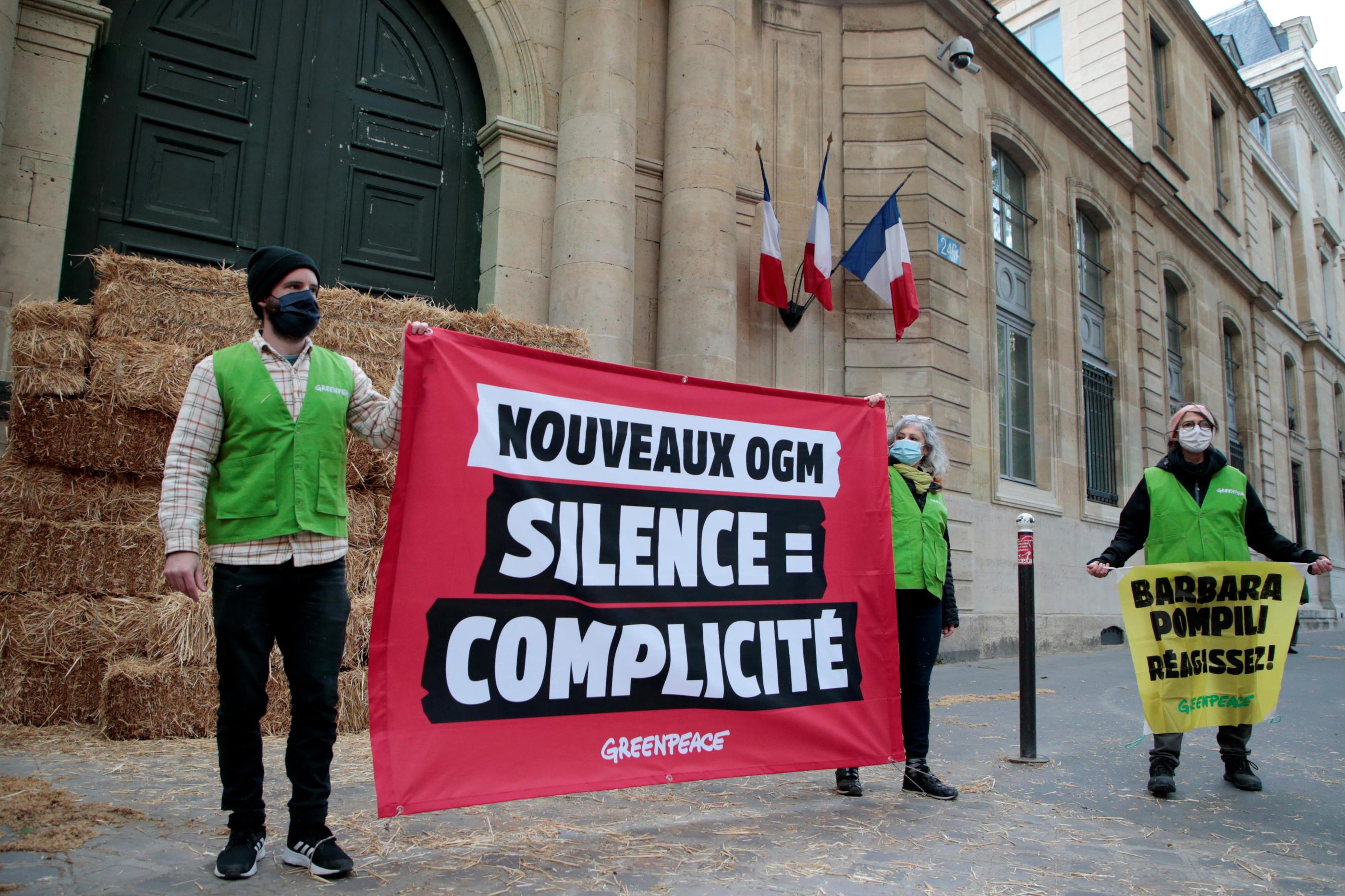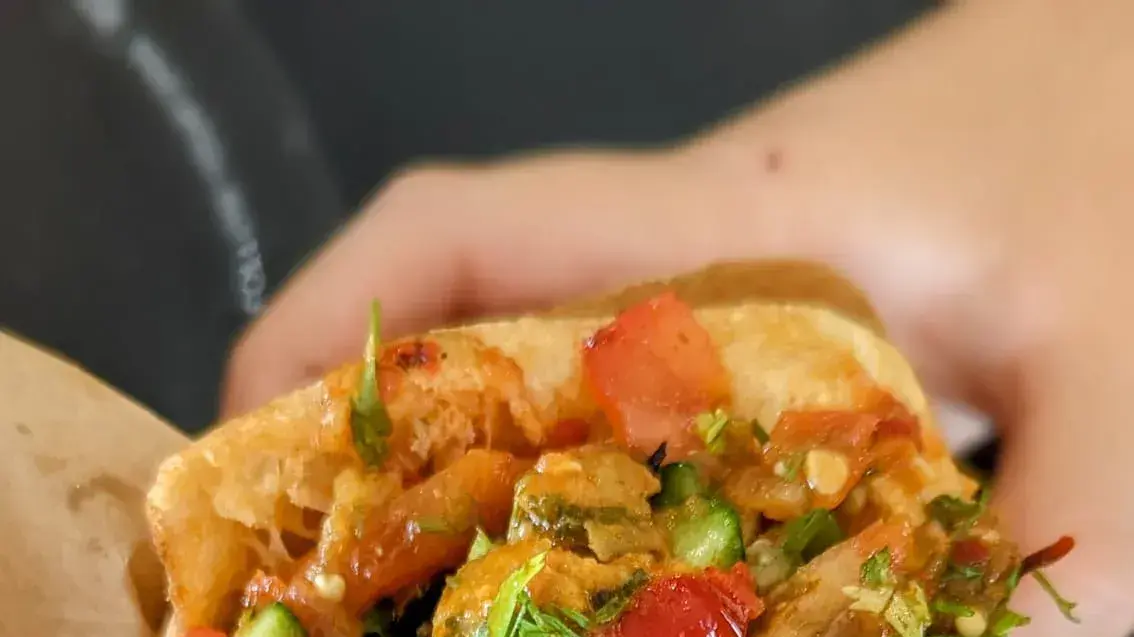7:32, this Monday morning.
The small commando of Greenpeace activists, neon green helmets on their backs, piles up hay bales in front of the entrance to the Ministry of Ecology.
Objective of the fist operation: alert on "new GMOs".
“We are building a wall of straw, because Barbara Pompili sends us into the wall!
Protested Suzanne Dalle, spokesperson for the environmental association, while the police began to surround the demonstrators.
This action comes while on Friday, the European Commission is due to report on these new generations of wheat, corn, soya… but also calves, cows, pigs modified in the laboratory.
Will they be as strictly regulated as the old GMOs?
France's official position could weigh.
What are “new GMOs”?
These “new GMOs”, very recent, are “additive-free”, unlike “old model” GMOs, like Monsanto MON810 corn, into which a gene from another plant or bacteria is inserted. "There, we use genetic scissors, the best known of which is Crispr-Cas9, which won the Nobel Prize in chemistry for the Frenchwoman Emmanuelle Charpentier", proudly notes Claude Tabel, the president of the French Seed Union. An ardent defender of this technique, he prefers to speak of NBT, for “new breeding techniques”. So when the Minister of Agriculture Julien Denormandie declares that “NBTs are not GMOs”, the opposite of what the European Court of Justice in 2018 and the Council of State ruled last year, Suzanne Dalle, from Greenpeace, chokes:“On the vocabulary and on the substance, it uses the language of industrialists! "
Can we find it on our plates?
"If we do not regulate them, the French consumer will not even know that he eats GMOs", estimates Suzanne Dalle. For the Confédération paysanne, resolutely in the anti-camp, this is certainly already the case: "In the United States and Canada in particular, varieties of rapeseed from the Cibus company are the result of these genetic modifications, so that they support better herbicides. However, this oil plant is massively imported into France, points out Guy Kastler, of the Confédération paysanne. Rapeseed varieties Clearfield (BASF), which represent 2 to 3% of French harvests, or more than 20,000 ha, are also new GMOs. In addition, we know that there are sunflowers affected by these genetic manipulations, but not in what proportions. "
Read alsoInvestigation: these GMOs hidden in our plates
Is it dangerous?
In the new techniques, the modifications are very precise.
"This is the equivalent of 2 meters out of the 16,000 kilometers of wheat DNA code", compares Pierre Barret, researcher at INRAE, the National Research Institute for Agriculture, Food. and the environment.
This allows the defenders of new GMOs to insist on the harmlessness: "We risk missing out on options for plants that would better resist drought or pests, or solutions for healthier foods" , laments the President of the French Seed Union, Claude Tabel, who insists: “If these NBT plants are subject to the same heavy regulations as GMOs in Europe, research will be done elsewhere.
"
VIDEO.
New GMOs: Greenpeace builds a straw wall in front of the Ministry of Ecological Transition
In the United States, start-ups are developing fries that stay yellow.
Anecdotal?
Not that much, these potatoes that do not blacken in an oil bath are less carcinogenic.
Other researchers are working on wheat with a lower gluten content… “Canada has an interesting approach, it applies the regulations not according to the technique used but according to the characteristics of the modified plant.
We could be inspired by it, ”imagines the INRAE researcher.
The idea would be to promote resistance to diseases, rather than resistance to herbicides for example.
And therefore to spread less pesticides, instead of increasing the doses.
Opponents, for their part, fear above all the “undesirable effects” which would fall beside the target. Suzanne Dalle thus quotes the big failure of the “GMO hornless cow”, created in 2014 by an American company in Minneapolis: “Studies have shown that these cattle had developed antibiotic resistance, potentially a disaster for the herds. "







